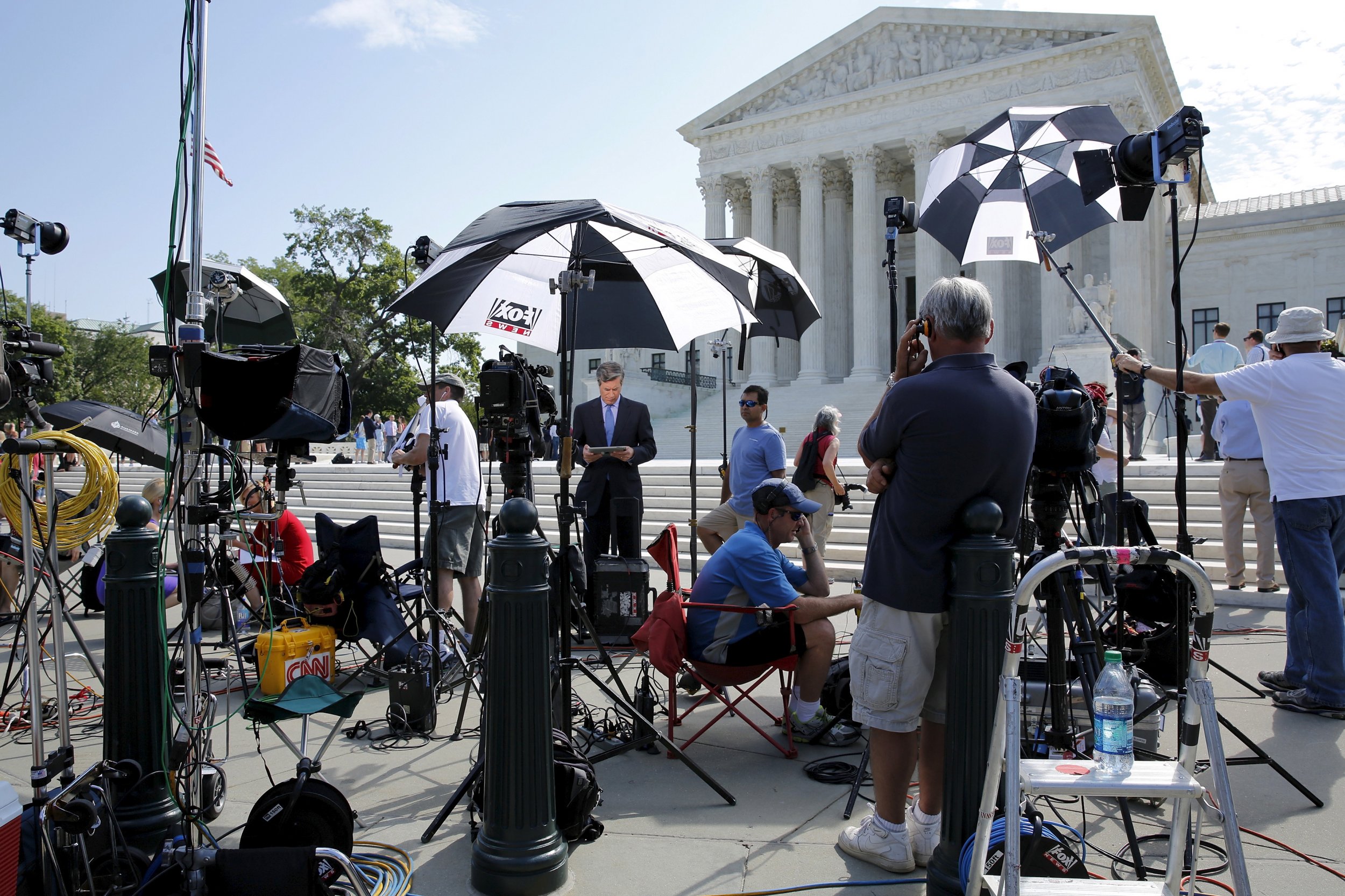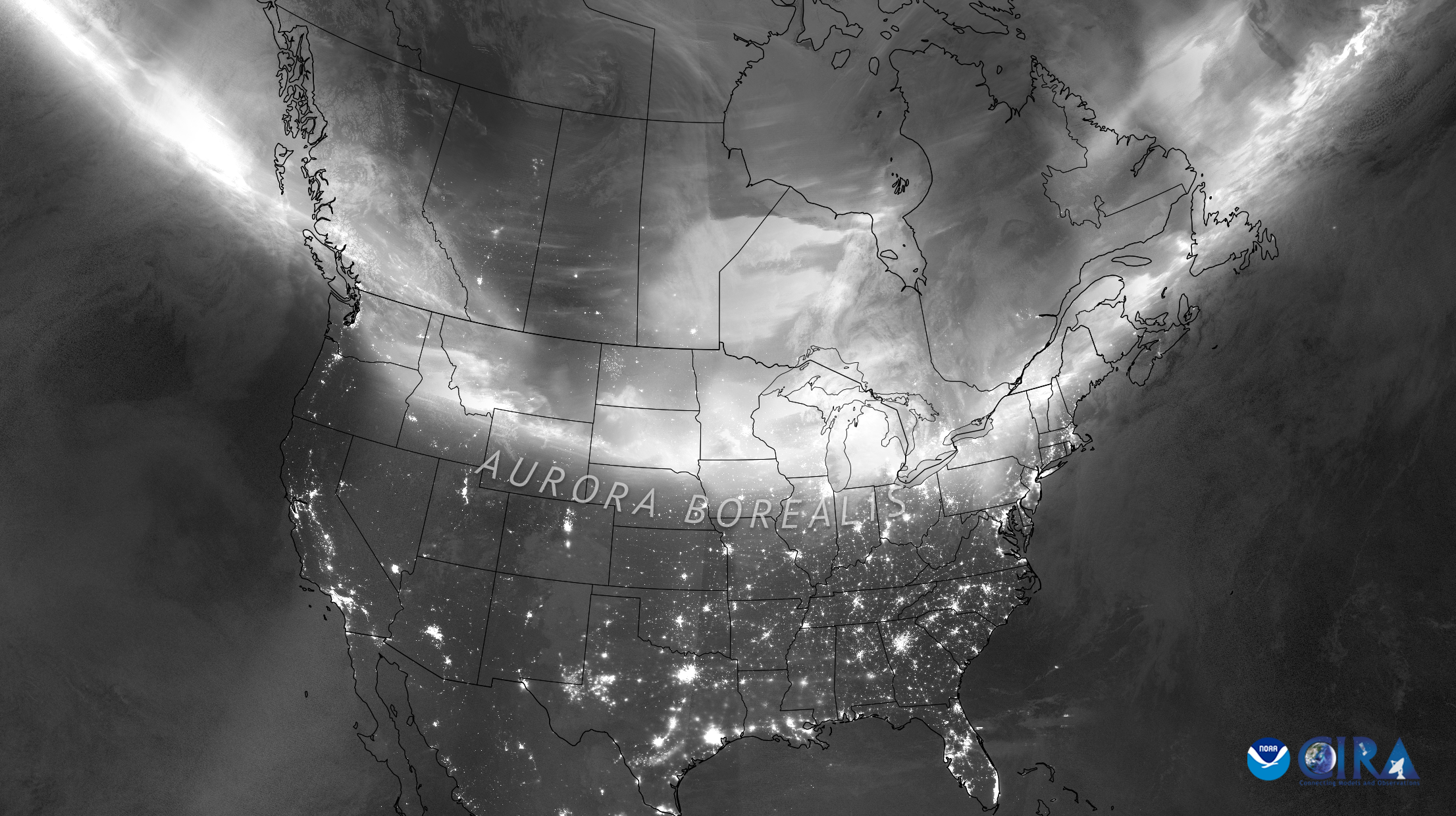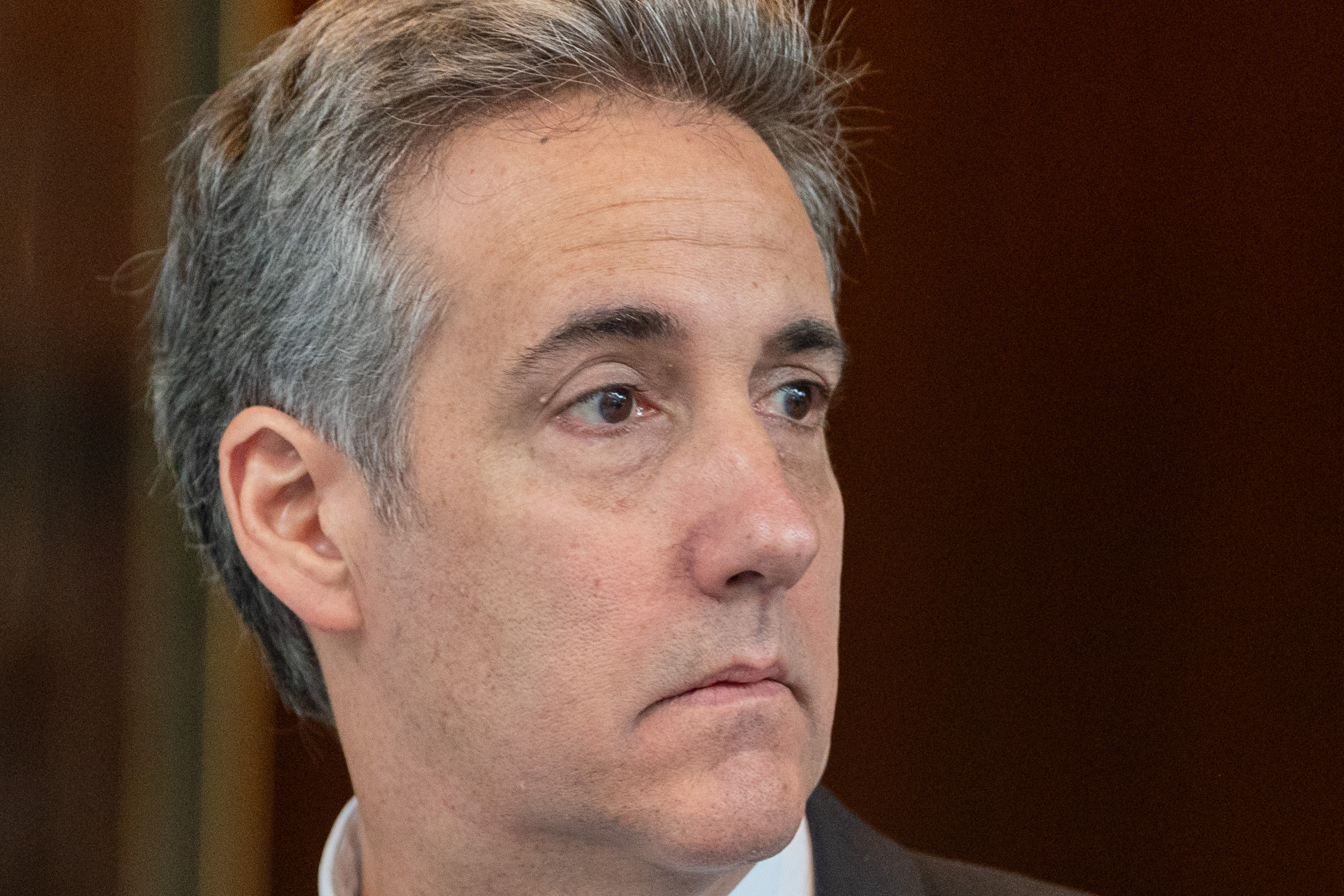
Before the end of this month, the U.S. Supreme Court will rule on King v. Burwell, a lawsuit that seeks to strip premium tax credits from people who live in states with a federal insurance marketplace under the Affordable Care Act, or ACA.
Repealing this pillar of the law, which helps make health coverage more affordable for consumers, would have severe consequences.
The stakes could not be higher. The sudden elimination of a key component of the ACA would cause substantial disruptions to the U.S. health care system. Moreover, it would take away health insurance coverage from more than eight million Americans and cause premiums to spike for many more.
This court decision has the potential to upend the health care system at the same time that the Affordable Care Act is working. Across the country, 16.4 million people have gained quality, affordable coverage as of May 2015.
If the U.S. Supreme Court were to rule in favor of the plaintiffs in the King v. Burwell case, this is how those depending on ACA subsidies would be affected, state by state:
• 90,000 more Iowans would be uninsured in 2016. According to the Urban Institute, 90,000 Iowans would be unable to afford their health insurance coverage and would become uninsured if the U.S. Supreme Court repeals the tax credits available under the Affordable Care Act in the federal marketplaces.
• Overall, more than 34,000 Iowans would lose an average of $3,156 in tax credits. According to the Centers for Medicare and Medicaid Services, 34,172 people would lose an average of $3,156 in tax credits if the U.S. Supreme Court rules in favor of the plaintiffs.
• On average, insurance premiums would increase more than 240 percent in Iowa. According to the Kaiser Family Foundation, the average subsidized enrollee in Iowa would face a premium increase of 244 percent. This estimate does not take into account the significant premium increases expected in 2016 and beyond if the elimination of premium tax credits causes healthy enrollees to drop coverage.
• More than 39,000 Iowans are enrolled in the federal marketplace. As of March 31, 2015, there were 39,090 Iowans with effectuated enrollment—meaning they have an active marketplace plan and have paid for their coverage.
• Eighty-seven percent of Iowans enrolled in the federal marketplace received financial assistance. As of March 2015, 87.4 percent of Iowans enrolled in the federal marketplace received financial assistance to help lower the cost of their health coverage.
• One million more Floridians would be uninsured in 2016. According to the Urban Institute, 1,073,000 Floridians would be unable to afford their health insurance coverage and would become uninsured if the U.S. Supreme Court repeals the tax credits available under the Affordable Care Act in the federal marketplaces.
• Overall, more than 1.3 million Floridians would lose an average of $3,528 in tax credits. According to the Centers for Medicare and Medicaid Services, 1,324,516 people would lose an average of $3,528 in tax credits if the U.S. Supreme Court rules in favor of the plaintiffs.
• On average, insurance premiums would increase more than 350 percent in Florida. According to the Kaiser Family Foundation, the average subsidized enrollee in Florida would face a premium increase of 359 percent. This estimate does not take into account the significant premium increases expected in 2016 and beyond if the elimination of premium tax credits causes healthy enrollees to drop coverage.
• More than 1.4 million Floridians are enrolled in the federal marketplace. As of March 31, 2015, there were 1,415,981 Floridians with effectuated enrollment—meaning they have an active marketplace plan and have paid for their coverage.
• Ninety-four percent of Floridians enrolled in the federal marketplace received financial assistance. As of March 2015, 93.5 percent of Floridians enrolled in the federal marketplace received financial assistance to help lower the cost of their health coverage.
• The uninsured rate in Florida dropped 3.2 percentage points from 2013 to 2014. From the beginning of 2013 to mid-2014, the uninsured rate in Florida dropped 3.2 percentage points, from 22.1 percent to 18.9 percent.
• Nearly 40,000 New Hampshirites would lose their insurance. According to the Urban Institute, 37,000 New Hampshirites would be unable to afford their health insurance coverage and would become uninsured if the U.S. Supreme Court repeals the tax credits available under the Affordable Care Act in the federal marketplaces.
• Overall, nearly 30,000 New Hampshirites would lose an average of $3,168 in tax credits. According to the Centers for Medicare and Medicaid Services, 29,996 people would lose an average of $3,168 in tax credits if the U.S. Supreme Court rules in favor of the plaintiffs.
• On average, insurance premiums would increase more than 200 percent in New Hampshire. According to the Kaiser Family Foundation, the average subsidized enrollee in New Hampshire would face a premium increase of 218 percent. This estimate does not take into account the significant premium increases expected in 2016 and beyond if the elimination of premium tax credits causes healthy enrollees to drop coverage.
• Nearly 46,000 New Hampshirites have selected a marketplace plan. As of March 31, 2015, there were 45,607 New Hampshirites with effectuated enrollment—meaning they have an active marketplace plan and have paid for their coverage.
• Sixty-six percent of New Hampshirites enrolled in the federal marketplace received financial assistance. As of March 2015, 65.8 percent of New Hampshirites enrolled in the federal marketplace received financial assistance to help lower the cost of their health coverage.
• The uninsured rate in New Hampshire dropped 1.4 percentage points from 2013 to 2014. From the beginning of 2013 to mid-2014, the uninsured rate in New Hampshire dropped 1.4 percentage points, from 13.8 percent to 12.4 percent.
• More than 400,000 North Carolinians would lose their insurance. According to the Urban Institute, 407,000 North Carolinians would be unable to afford their health insurance coverage and would become uninsured if the U.S. Supreme Court repeals the tax credits available under the Affordable Care Act in the federal marketplaces.
• Overall, nearly 460,000 North Carolinians would lose an average of $3,792 in tax credits. According to the Centers for Medicare and Medicaid Services, 458,738 people would lose an average of $3,792 in tax credits if the U.S. Supreme Court rules in favor of the plaintiffs.
• On average, insurance premiums would increase more than 330 percent in North Carolina. According to the Kaiser Family Foundation, the average subsidized enrollee in North Carolina would face a premium increase of 336 percent. This estimate does not take into account the significant premium increases expected in 2016 and beyond if the elimination of premium tax credits causes healthy enrollees to drop coverage.
• More than 490,000 North Carolinians have selected a marketplace plan. As of March 31, 2015, there were 492,014 North Carolinians with effectuated enrollment—meaning they have an active marketplace plan and have paid for their coverage.
• Ninety-three percent of North Carolinians enrolled in the federal marketplace received financial assistance. As of March 2015, 93.2 percent of North Carolinians enrolled in the federal marketplace who selected a plan in the federal marketplace received financial assistance to help lower the cost of their health coverage.
• The uninsured rate in North Carolina dropped 3.7 percentage points from 2013 to 2014. From the beginning of 2013 to mid-2014, the uninsured rate in North Carolina dropped 3.7 percentage points, from 20.4 percent to 16.7 percent.
• Nearly 460,000 more Ohioans would be uninsured in 2016. According to the Urban Institute, 459,000 Ohioans would be unable to afford their health insurance coverage and would become uninsured if the U.S. Supreme Court repeals the tax credits available under the Affordable Care Act in the federal marketplaces.
• Overall, more than 161,000 Ohioans would lose an average of $3,060 in tax credits. According to the Centers for Medicare and Medicaid Services, 161,011 people would lose an average of $3,060 in tax credits if the U.S. Supreme Court rules in favor of the plaintiffs.
• On average, insurance premiums would increase almost 200 percent in Ohio. According to the Kaiser Family Foundation, the average subsidized enrollee in Ohio would face a premium increase of 190 percent. This estimate does not take into account the significant premium increases expected in 2016 and beyond if the elimination of premium tax credits causes healthy enrollees to drop coverage.
• More than 188,000 Ohioans are enrolled in the federal marketplace. As of March 31, 2015, there were 188,867 Ohioans with effectuated enrollment—meaning they have an active marketplace plan and have paid for their coverage.
• Eighty-five percent of Ohioans enrolled in the federal marketplace received financial assistance. As of March 2015, 85.3 percent of Ohioans enrolled in the federal marketplace received financial assistance to help lower the cost of their health coverage.
• The uninsured rate in Ohio dropped 2.4 percentage points from 2013 to 2014. From the beginning of 2013 to mid-2014, the uninsured rate in Ohio dropped 2.4 percentage points, from 13.9 percent to 11.5 percent.
• Nearly 330,000 more Pennsylvanians would be uninsured in 2016. According to the Urban Institute, 329,000 Pennsylvanians would be unable to afford their health insurance coverage and would become uninsured if the U.S. Supreme Court repeals the tax credits available under the Affordable Care Act in the federal marketplaces.
• Overall, nearly 350,000 Pennsylvanians would lose an average of $2,742 in tax credits. According to the Centers for Medicare and Medicaid Services, 348,823 people would lose an average of $2,742 in tax credits if the U.S. Supreme Court rules in favor of the plaintiffs.
• On average, insurance premiums would increase more than 170 percent in Pennsylvania. According to the Kaiser Family Foundation, the average subsidized enrollee in Pennsylvania would face a premium increase of 177 percent. This estimate does not take into account the significant premium increases expected in 2016 and beyond if the elimination of premium tax credits causes healthy enrollees to drop coverage.
• Nearly 430,000 Pennsylvanians are enrolled in the federal marketplace. As of March 31, 2015, there were 427,454 Pennsylvanians with effectuated enrollment—meaning they have an active marketplace plan and have paid for their coverage.
• Eighty-two percent of Pennsylvanians enrolled in the federal marketplace received financial assistance. As of March 2015, 81.6 percent of Pennsylvanians enrolled in the federal marketplace received financial assistance to help lower the cost of their health coverage.
• The uninsured rate in Pennsylvania dropped 0.9 percentage points from 2013 to 2014. From the beginning of 2013 to mid-2014, the uninsured rate in Pennsylvania dropped 0.9 percentage points, from 11.0 percent to 10.9 percent.
• About 230,000 Tennesseans would lose their insurance. According to the Urban Institute, 230,000 Tennesseans would be unable to afford their health insurance coverage and would become uninsured if the U.S. Supreme Court repeals the tax credits available under the Affordable Care Act in the federal marketplaces.
• Overall, more than 155,000 Tennesseans would lose an average of $2,616 in tax credits. According to the Centers for Medicare and Medicaid Services, 155,753 people would lose an average of $2,616 in tax credits if the U.S. Supreme Court rules in favor of the plaintiffs.
• On average, insurance premiums would increase more than 220 percent in Tennessee. According to the Kaiser Family Foundation, the average subsidized enrollee in Tennessee would face a premium increase of 222 percent. This estimate does not take into account the significant premium increases expected in 2016 and beyond if the elimination of premium tax credits causes healthy enrollees to drop coverage.
• More than 180,000 Tennesseans have selected a marketplace plan. As of March 31, 2015, there were 182,893 Tennesseans with effectuated enrollment—meaning they have an active marketplace plan and have paid for their coverage.
• Eighty-five percent of Tennesseans enrolled in the federal marketplace received financial assistance. As of March 2015, 85.2 percent of Tennesseans enrolled in the federal marketplace received financial assistance to help lower the cost of their health coverage.
• The uninsured rate in Tennessee dropped 2.4 percentage points from 2013 to 2014. From the beginning of 2013 to mid-2014, the uninsured rate in Tennessee dropped 2.4 percentage points, from 16.8 percent to 14.4 percent.
• Nearly 1.5 million more Texans would be uninsured in 2016. According to the Urban Institute, 1,441,000 Texans would be unable to afford their health insurance coverage and would become uninsured if the U.S. Supreme Court repeals the tax credits available under the Affordable Care Act in the federal marketplaces.
• Overall, more than 830,000 Texans would lose an average of $2,964 in tax credits. According to the Centers for Medicare and Medicaid Services, 832,334 people would lose an average of $2,964 in tax credits if the U.S. Supreme Court rules in favor of the plaintiffs.
• On average, insurance premiums would increase more than 300 percent in Texas. According to the Kaiser Family Foundation, the average subsidized enrollee in Texas would face a premium increase of 305 percent. This estimate does not take into account the significant premium increases expected in 2016 and beyond if the elimination of premium tax credits causes healthy enrollees to drop coverage.
• Nearly 1 million Texans are enrolled in the federal marketplace. As of March 31, 2015, there were 966,412 Texans with effectuated enrollment—meaning they have an active marketplace plan and have paid for their coverage.
• Eighty-six percent of Texans enrolled in the marketplace received financial assistance. As of March 2015, 86.1 percent of Texans enrolled in the federal marketplace received financial assistance to help lower the cost of their health coverage.
• The uninsured rate in Texas dropped 3 percentage points from 2013 to 2014. From the beginning of 2013 to mid-2014, the uninsured rate in Texas dropped 3 percentage points, from 27 percent to 24 percent.
• Nearly 250,000 more Wisconsinites would be uninsured in 2016. According to the Urban Institute, 247,000 Wisconsinites would be unable to afford their health insurance coverage and would become uninsured if the U.S. Supreme Court repeals the tax credits available under the Affordable Care Act in the federal marketplaces.
• Overall, more than 166,000 Wisconsinites would lose an average of $3,780 in tax credits. According to the Centers for Medicare and Medicaid Services, 166,142 people would lose an average of $3,780 in tax credits if the U.S. Supreme Court rules in favor of the plaintiffs.
• On average, insurance premiums would increase more than 250 percent in Wisconsin. According to the Kaiser Family Foundation, the average subsidized enrollee in Wisconsin would face a premium increase of 252 percent. This estimate does not take into account the significant premium increases expected in 2016 and beyond if the elimination of premium tax credits causes healthy enrollees to drop coverage.
• More than 183,000 Wisconsinites are enrolled in the federal marketplace. As of March 31, 2015, there were 183,155 Wisconsinites with effectuated enrollment—meaning they have an active marketplace plan and have paid for their coverage.
• Ninety-one percent of Wisconsinites enrolled in the marketplace received financial assistance. As of March 2015, 90.7 percent of Wisconsinites enrolled in the federal marketplace received financial assistance to help lower the cost of their health coverage.
• The uninsured rate in Wisconsin dropped 2.1 percentage points from 2013 to 2014. From the beginning of 2013 to mid-2014, the uninsured rate in Wisconsin dropped 2.1 percentage points, from 11.7 percent to 9.6 percent.
This information was first published on the Center for American Progress site.
Uncommon Knowledge
Newsweek is committed to challenging conventional wisdom and finding connections in the search for common ground.
Newsweek is committed to challenging conventional wisdom and finding connections in the search for common ground.
About the writer
To read how Newsweek uses AI as a newsroom tool, Click here.





